It’s amazing how a simple change in perspective can cause huge changes in your life. Before I started my herbalism certification, I hadn’t really considered the weeds in my gardens as anything but a nuisance. Now that I know better, I treat them as treasures to discover every spring.
Before, I would make sure we always kept the grass in our yard clipped and manicured, but now, I wait as long as possible before doing that first mow in the spring. I let the weeds grow until the yard is filled with beautiful purple violets and tall dandelions.
Some of my favorite spring weeds to hunt for include stinging nettles, dandelions, cleavers, plantain, and violets.
1. Stinging Nettles (Urtica dioica)
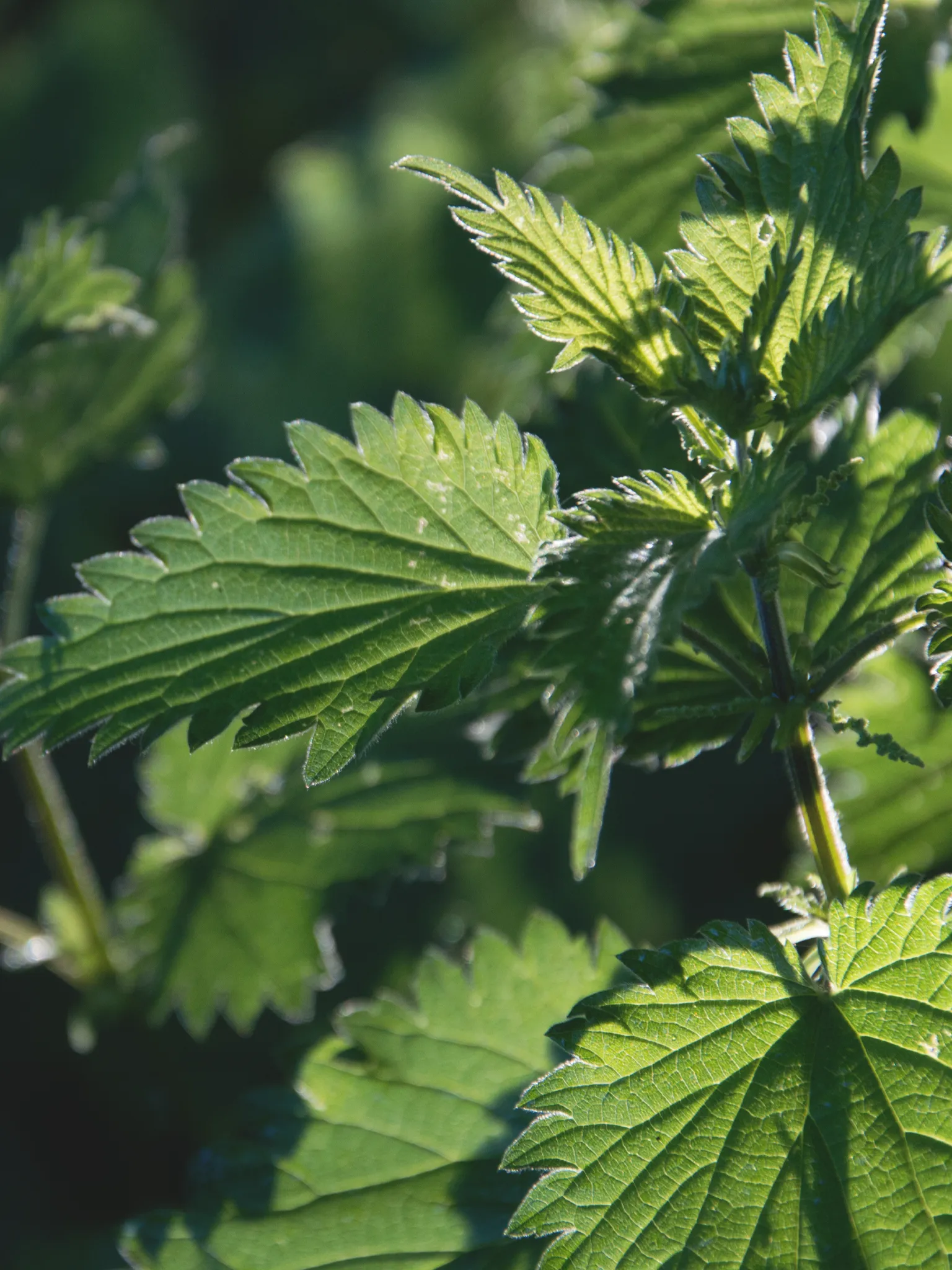
Nettles are packed with nutrients like vitamins A, C, and K, as well as several B vitamins. They are also rich in minerals such as calcium, iron, and magnesium. They are easily identifiable by their heart-shaped leaves and tiny hair-like stingers.
Nettles are one of the first things to pop up in my gardens. I harvest the purple-tinged tops to use in soups and teas. They have a salty green flavor and are a good substitute for spinach.
Be sure to wear gloves when harvesting nettles because those stingers definitely hurt! Drying, cooking, or steaming will remove the sting so they are safe to consume.
Stinging nettle is primarily known for the following herbal actions:
- Diuretic: Stinging nettle has been used traditionally as a diuretic, meaning it promotes urination. This can help the body eliminate toxins and excess fluids, and may support kidney and urinary health.
- Anti-inflammatory: The plant is also known for its anti-inflammatory properties, which can help reduce swelling and pain in the body. This is particularly useful for conditions such as arthritis or other inflammatory conditions.
- Antihistamine: Stinging nettle has been found to have natural antihistamine properties, making it useful for treating allergy symptoms.
- Nutritive: Nettles are rich in vitamins and minerals, making it a valuable nutritive herb.
2. Dandelion (Taraxacum officinale)
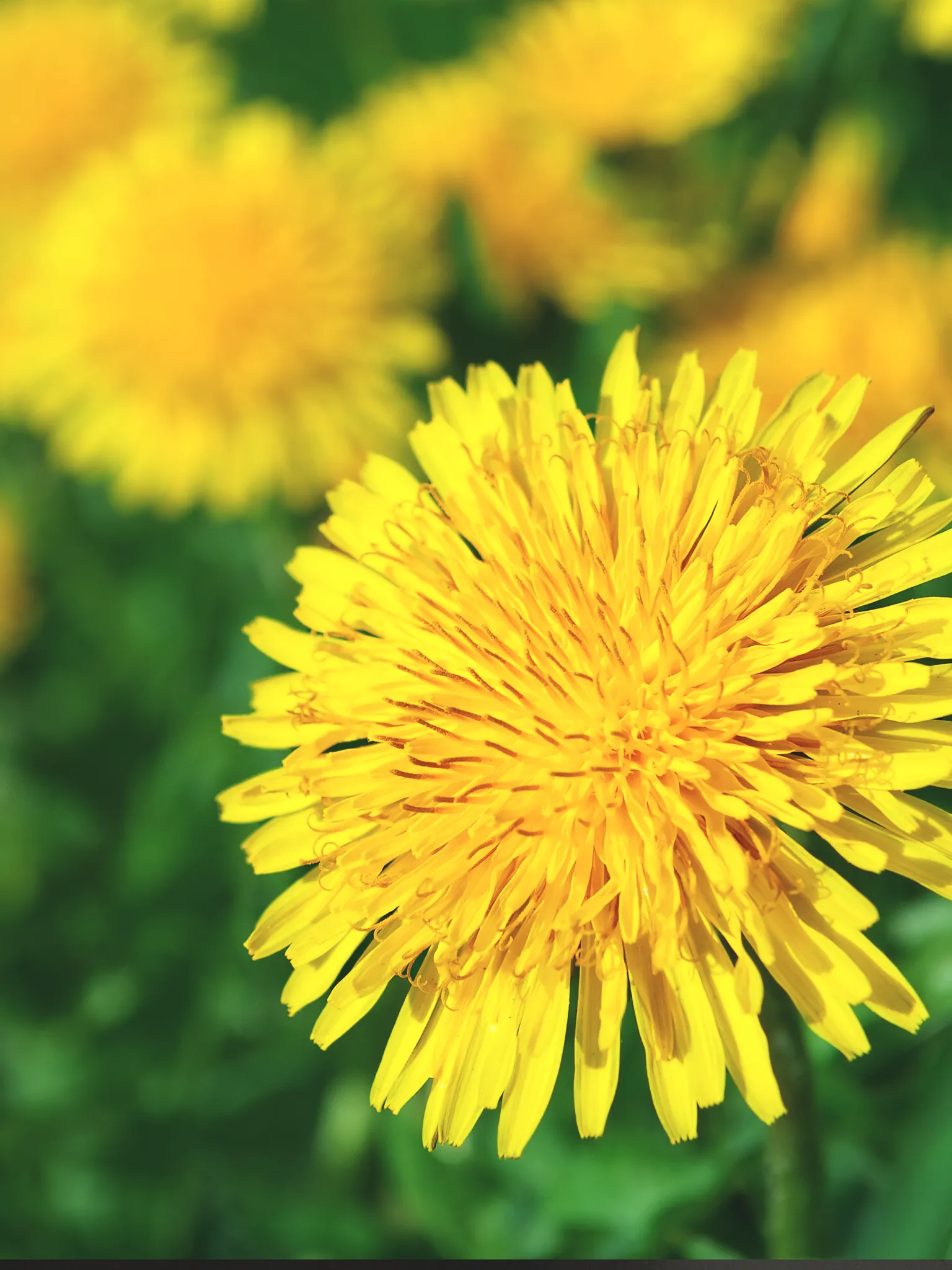
Dandelions are rich in vitamins A, C, and K, and are a good source of calcium, potassium, iron, and manganese. It can support liver health, stimulate digestion, and as a natural diuretic. The entire plant, roots to flowers, is edible.
Use young dandelion leaves and flower petals in salads. I like to use the dried, roasted roots as a coffee substitute. I still drink coffee, though – I will never give that up 😊.
Join Our Newsletter
Sign up for our monthly newsletter to get easy gardening tips, seasonal to-dos, and herbal recipes delivered right to your inbox.
Thank you!
Check your email to confirm your subscription.
In the fall, I dig up the roots, and I won’t lie – it’s not that fun. Digging them up is pretty easy with a hori hori knife, but cleaning the roots takes a bit of elbow grease. It’s not that different from scrubbing carrots or beets, but there are way more nooks and crannies with dandelion.
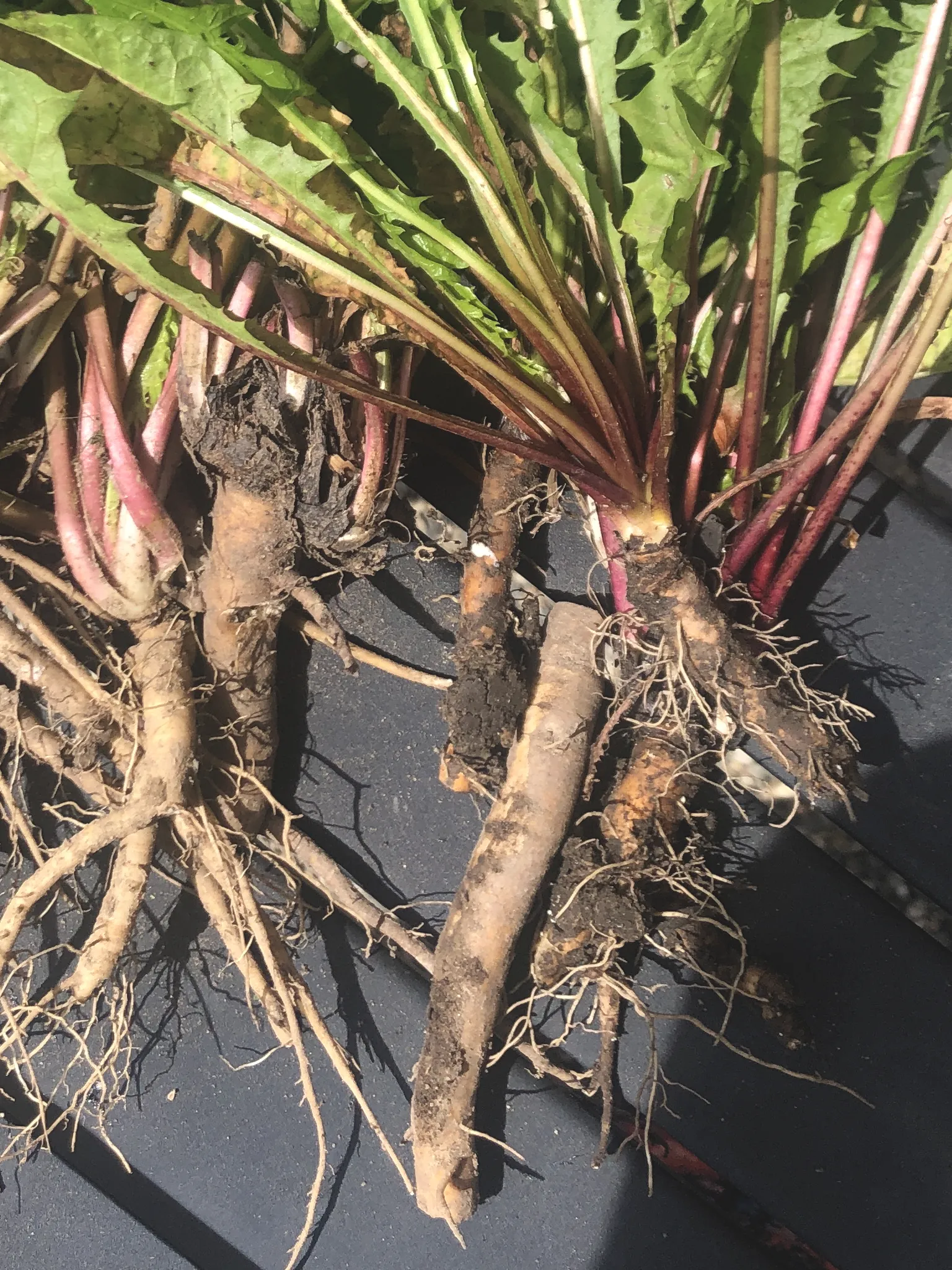
Dandelion is primarily known for the following herbal actions:
- Diuretic: Dandelion leaf is a strong diuretic, helping the body eliminate excess fluid, and is often used for conditions like hypertension and edema.
- Cholagogue: Dandelion root stimulates the production and release of bile from the gallbladder, aiding in digestion and absorption of fats.
- Hepatic: As a hepatic herb, it supports the health and function of the liver.
- Nutritive: Rich in vitamins A, C, and K, and minerals such as potassium, iron, and zinc, dandelion is a potent nutritive herb.
3. Cleavers (Galium aparine)
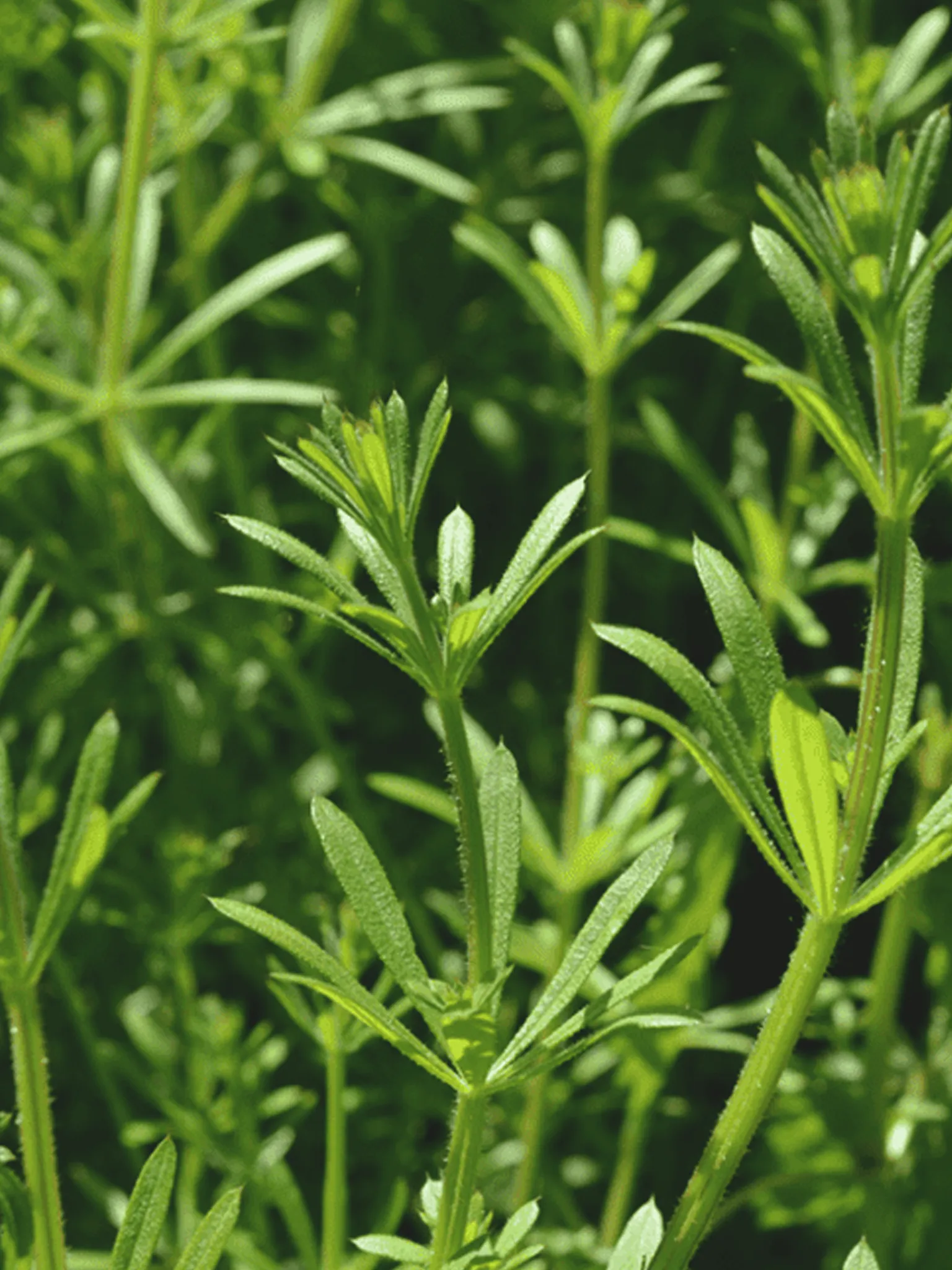
Cleavers are a fun weed – they’re really sticky but not prickly or painful to touch like nettles. We can use them to stimulate the lymphatic system, support urinary health, and soothe skin conditions.
Cleavers can be infused into a tea or used topically in a poultice for skin conditions.
Cleavers is primarily known for the following herbal actions:
- Lymphatic: Cleavers is well-known for supporting the lymphatic system, helping to clear lymphatic congestion and inflammation.
- Diuretic: Like dandelion, cleavers has diuretic properties, promoting the elimination of excess fluid from the body.
- Vulnerary: Cleavers has been used topically to help heal wounds and burns.
4. Broadleaf Plantain (Plantago major)
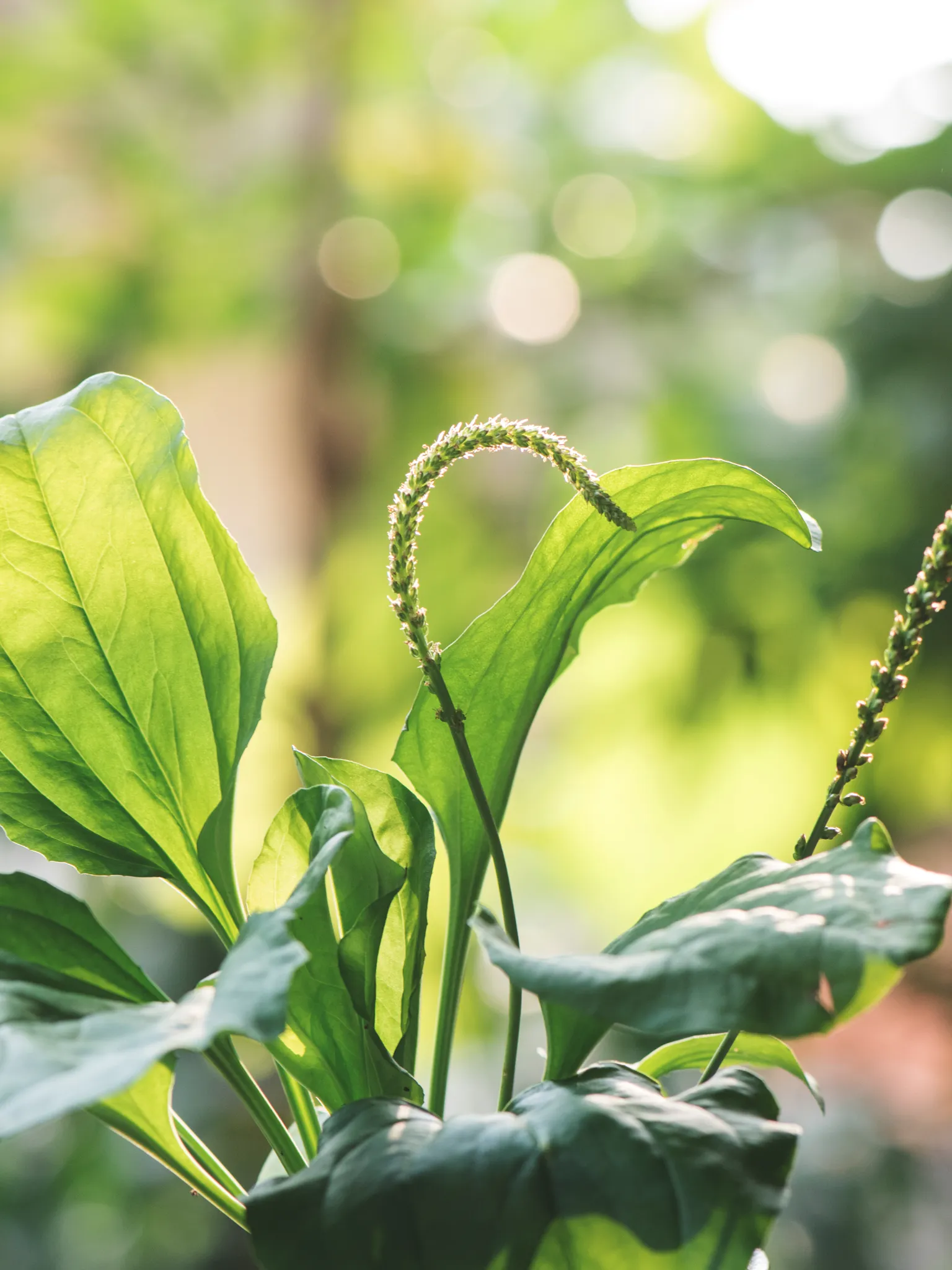
Not to be confused with the tropical fruit, plantain has broad leaves with parallel veins and a tall flower spike in the center. We can use it topically to soothe bites, bee stings, burns, and minor skin irritations.
Use plantain leaves for salves or poultices or brew them into a tea.
Plantain is primarily known for the following herbal actions:
- Vulnerary: Plantain is known for its wound-healing properties. It’s often used topically for minor cuts, burns, and bug bites.
- Demulcent: The leaves of the plantain plant are soothing and cooling to the skin and mucous membranes, helping to alleviate irritation and inflammation.
5. Violet (Viola odorata)
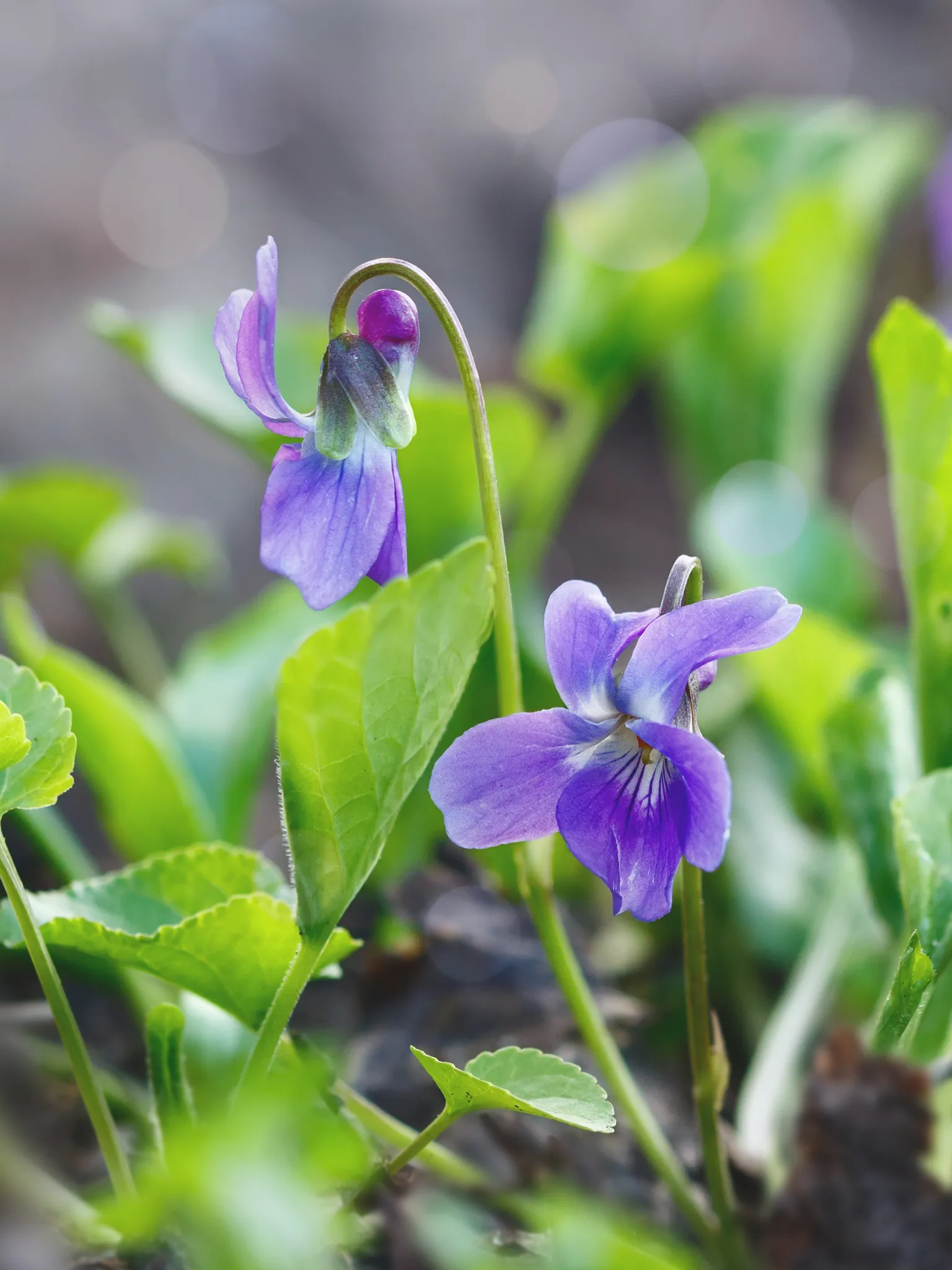
We can use violets to soothe respiratory ailments, like coughs and colds, and to soothe skin conditions. The leaves and flowers are edible and can be used in teas, salads, vinegars, and soups.
My favorite way to use violet flowers are to scatter them on spring salads or in an herbal vinegar. I use white wine vinegar, rice vinegar, or white balsamic vinegar to infuse the violet flowers so it turns a beautiful shade of pinky-purple.
Violet is primarily known for the following herbal actions:
- Lymphatic: Like cleavers, violet is often used to support the health of the lymphatic system.
- Demulcent: Violet leaves are soothing to the skin and mucous membranes, much like plantain.
- Antioxidant: Violets contain a variety of antioxidant compounds that can help to neutralize harmful free radicals in the body.
Join Our Newsletter
Sign up for our monthly newsletter to get easy gardening tips, seasonal to-dos, and herbal recipes delivered right to your inbox.
Thank you!
Check your email to confirm your subscription.
Make sure you cross-reference with reliable field guides, botanical texts, or trustworthy online resources. Also, if you’re not 100% sure about a plant’s identification, don’t harvest it.
And remember, even with correct identification, be aware of potential contamination from pesticides or pollutants. So, never forage near train tracks or next to roads!













